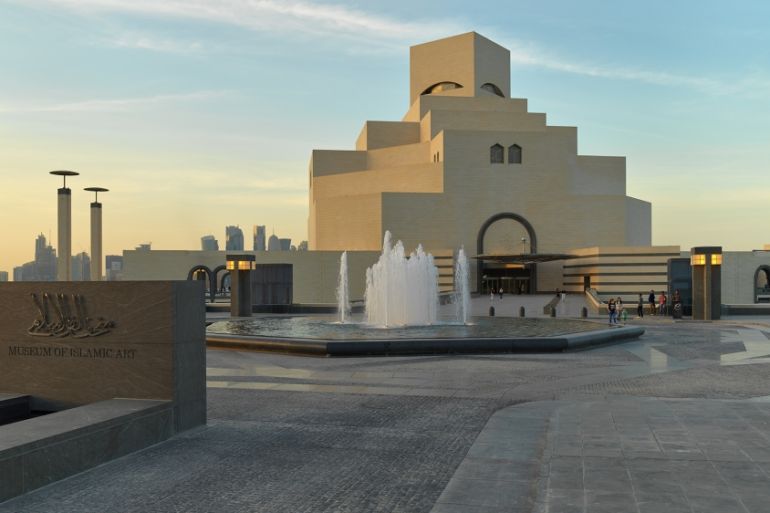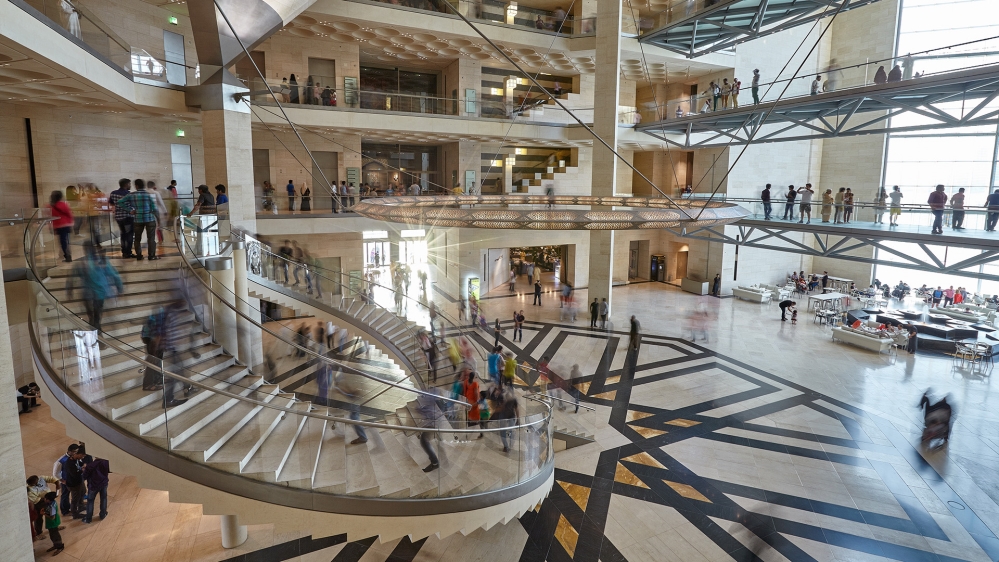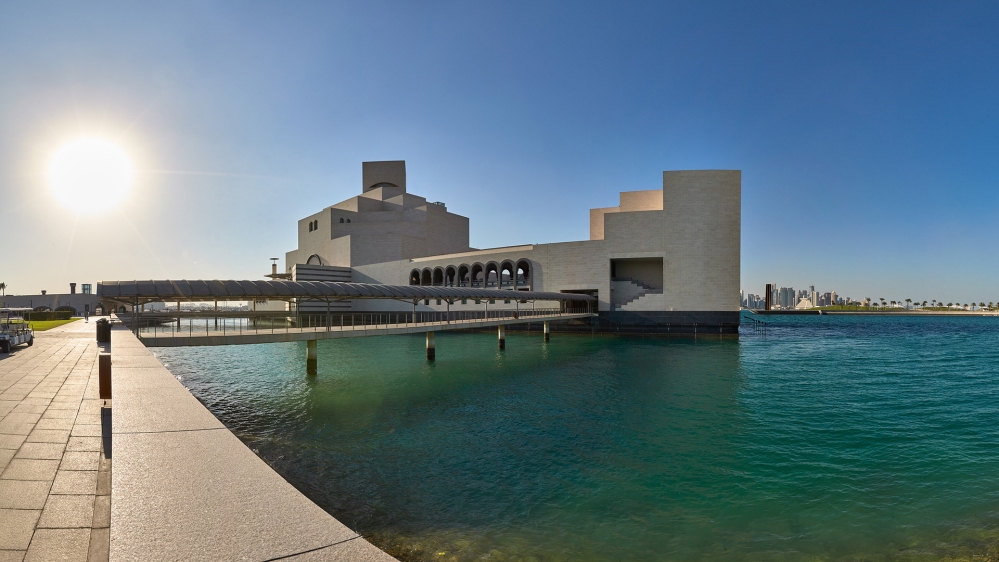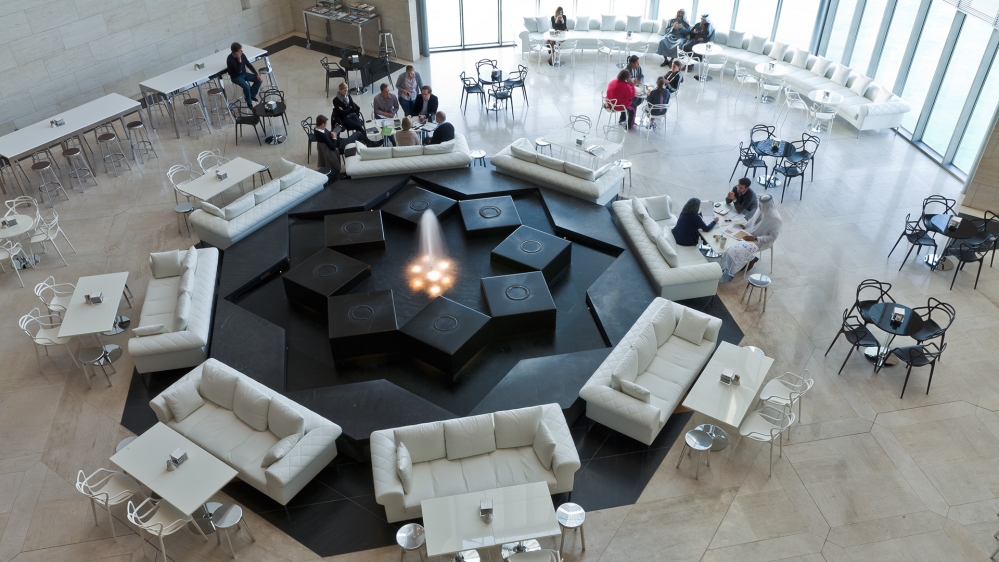Simple, iconic: How I M Pei’s Museum of Islamic Art reshaped Qatar
The Chinese-born architect was known for transforming cityscapes – Doha residents share how he changed theirs.

Growing up, I lived in Umm Slal, a small town on the outskirts of Doha, Qatar‘s capital city. My bedroom window faced open desert, the rocky ground forming a simple line across the horizon, the faint trace of electricity lines silhouetted against the sun. My favourite time of day was when the sun would set directly into my room, the light filtering through the tinted windows and onto my blue-painted walls.
Ours was a small neighbourhood – a row of cement houses with metal gates, one main street and some stray cats. But that was changing quickly. Take-away restaurants and residential compounds were appearing, rows of houses were being built on once-flat desert. Doha’s suburbs were encroaching, rapidly.
Keep reading
list of 4 itemsInside the pressures facing Quebec’s billion-dollar maple syrup industry
‘Accepted in both [worlds]’: Indonesia’s Chinese Muslims prepare for Eid
Photos: Mexico, US, Canada mesmerised by rare total solar eclipse
Downtown, a glittering skyline was emerging; construction cranes and cement skeletons gave way to metal and glass towers and I could see growing when we drove through the city.
Some of the new buildings gave you vertigo. The Museum of Islamic Art was one of them.
I was in middle school when it was constructed on a man-made island on the south side of Doha’s Corniche, a stretch of seafront along which the city is built.
It was designed by I M Pei (1917 – 2019), the Chinese-born architect known for modern designs such as the Louvre pyramid in Paris and the Bank of China tower in Hong Kong. He had been coaxed out of retirement to design it.
The Qatari government’s vision for the building was clear: It would be the first and crown jewel of a series of museums in the country.
The MIA museum opened to the public in 2008; it was like nothing the city had seen before.
The building feels otherworldly; its light stone rising from the water 60 metres offshore, its shaded arches dwarfing visitors who pass beneath them, its angled walls casting shadows under the shifting sun.
Yet, it also feels like home; the dry rustle of palm trees along the outdoor walkway, the salty ocean air, the warm stone underfoot, and the building’s simple shapes – circles, squares and stars – are familiar to residents of this small Gulf country.
Like many new buildings, it seems to offer a promise for the future while also leaving you contemplating what lay there before.
It is a familiar feeling in a rapidly growing city where the skyline seemed to appear almost overnight.
I wonder now visiting the museum – walking past the white noise of water running down the entrance bridge, through glass doors and into an atrium that feels as simple and bright as the desert itself – why I M Pei, then in his 80s and at the end of his career, had chosen to design it.
I spoke to a number of people who knew him or his work well and they had some ideas why he did: He had never worked in the Middle East before and saw it as a new frontier; he had developed a genuine friendship with our father emir, Sheikh Hamad bin Khalifa Al Thani, who gave him the freedom to build his masterpiece; he was taken by the vision and drive of a royal family that was putting their money towards preserving the cultural history of the region.
Some of them had met the Pritzker Prize-winning architect – who passed away at the age of 102 last week – and others hadn’t. I wish I had, as I walk through the museum and am again reminded of my childhood bedroom, of the sun setting on its walls, of the open desert.
I M Pei had insisted that the museum be built on reclaimed land so that no number of new towers could obstruct the sun.
I M Pei, I see, also loved the Doha light.
Others shared with me their view of the museum and what it means to them.
‘A big bang’

Julia Gonnella, director of the Museum of Islamic Art since 2017, remembers when the museum opened and says its international impact could not be overstated.
“It was a big bang,” she says, sitting in her brightly lit office overlooking the grounds. A scholar of archaeology and Islamic art, she had been working in Berlin in 2008.
Rather than being devoted to any one region, the museum’s collection had objects everywhere from North Africa to the Middle East to the East Asia.
“It’s a huge museum and, of course, it was an event because it was the first of these sort of mega-museums in the Gulf,” she says.
Of all the items in its collection – from beautiful metalwork to intricate carpets and vases – the building itself was the most remarkable.
“It became the iconic landmark and I think it will remain the iconic landmark because of its superb location here.”
‘In the middle of the sea’

Shamsudeen Nalakath Paduvingal is in Qatar on a business trip and decided to stop by the museum.
He sits on a white couch in the atrium, facing a window overlooking the ocean and Doha’s skyline.
“It is a very special building … you can feel it is in the middle of the sea,” he says with a soft laugh.
Unlike a number of tourists visiting that day, Paduvingal considers Qatar his second home. He lived here for 20 years before moving home to Kerala, India six years ago. The visit is bringing back memories.
“Sitting here and seeing all these things, I am really feeling that nostalgia when I was moving here in Qatar and living with my family … I’ve never seen such kind of a good place in my life.”
I thought of having some time here with my past memories.
The city is developing quicker than he ever imagined, he says, remembering Doha in the 1990s, before the construction boom.
For him, it was a simple, more relaxed time, and he describes manageable working hours, close relationships with Qataris, and time spent with family and friends.
Paduvingal sees a city that is busier and more bustling now, and while he misses the old Doha, he sees what it has become as a step forward.
“Modern living it is required. It is very much required and Doha is developing … and the people are getting better standards [of living].”
Paduvingal says he hopes to be able to move back to Doha. His children, now grown and living abroad, want him to do that so they can move back too.
For now, the museum gives him space to reflect. “I am staying in a nearby hotel and I thought of having some time here with my past memories.”
‘The essence of Islam’

Sara Al Sada, a young Qatari architect, was completely taken by the museum and what it represented when she first visited it.
“I was obsessed by the beauty of the building … the architecture, the details of the interior,” she says. “But then I start asking myself, ‘OK, I appreciate the building but what is the Islamic part of it …? Is it arcades, is it the fountain courtyard, is it the chandelier in the middle of the atrium? What is it exactly? Or is it a collection of all of these?'”
Al Sada wanted to learn more about the Islamic influences in the building, so she read about I M Pei and his travels around the Islamic world to learn about its architecture, seeking its “essence”.
He was inspired by the famous Mosque of Ibn Tulun in Cairo but chose to reflect the spirit of Islamic architecture – which always seeks simplicity – rather than any one design element.
“He captured it very deeply,” Al Sada reflects.
In her own work, she is inspired by I M Pei’s use of natural light and ventilation and believes buildings like these can inspire other young architects in Qatar to use the environment around them while creating multi-use public spaces that impact public thinking.
“[An] architect is … responsible for bringing the society back, designing their lives,” she says.
“We can build a totally new society through architecture, a totally different mind also.” The museum addresses one of Doha’s urban planning challenges, that of creating enough public spaces, something Al Sada has focused on since graduating in 2017.
The interior has a spacious atrium cafe where people gather while the expansive grounds offer more areas where families and groups of friends can stroll, lounge on the grass, or play with their children.
“Relating culture, art, and public spaces is also a very important step in the country … I’m learning a lot from this and trying to develop it,” Al Sada explains.
For her, I M Pei’s design, and the effort to bring the museum alive, honours Qatar’s history without being stuck in the past.
“Bringing back these elements in a totally new and different style will always remind you that your past can always be with you from your point of view,” she says.
‘It’s an artwork’
![Museum of Islamic Art, Doha, Qatar [Showkat Shafi/Al Jazeera]](/wp-content/uploads/2019/05/8eff65a7f9a84c6491de79968d78b878_18.jpeg)
Shaika Nasser Al-Nassr, the deputy director of curatorial affairs, has been with the museum since the beginning.
She remembers working in off-site storage before the building was completed, pushing to get the museum off the ground. “After we left our abayas were full of dust,” she says of the traditional Qatari garb with a laugh.
Eleven years later, she is fully settled in. Al-Nassr oversees the museum’s exhibitions and digital projects, as well as the conservation and registration of objects.
She and her team work to put on exhibitions that are relevant to residents and visitors, such as the recent Syria Matters exhibition.
It looked at Syria’s cultural heritage, and attracted 110,000 visitors, according to the museum’s director. Part of its draw, Al-Nasser thinks, was its relevance in politics and life today.
Al-Nassr believes the museum’s location in the Middle East is key, and says she never tires of the collection, which she believes is the first of its kind.
“I think … it’s like you are putting the objects into context,” she says. “It’s in the region, it’s where the Islamic arts in the Arabian Peninsula really started … and spread around the world.”
When you see the objects, they … really have high, high techniques, but they are simple at the same time, which kind of reflects our belief and religion.
The artwork also reflects the religion, she says, and the message it carries is something she can pass down to her children, as can visitors.
“When you see the objects, they … really have high, high techniques, but they are simple at the same time, which kind of reflects our belief and religion, which is simplicity,” she says.
The artists could have created lavish works, she says, “but no, it’s so beautiful and so simple … and this reflects our beliefs, like you have to be humble”.
“I’ve been to many international museums and especially Islamic art galleries. I don’t think I’ve seen such a museum that really tells the story of Islamic art, history in such a way and in-depth.”